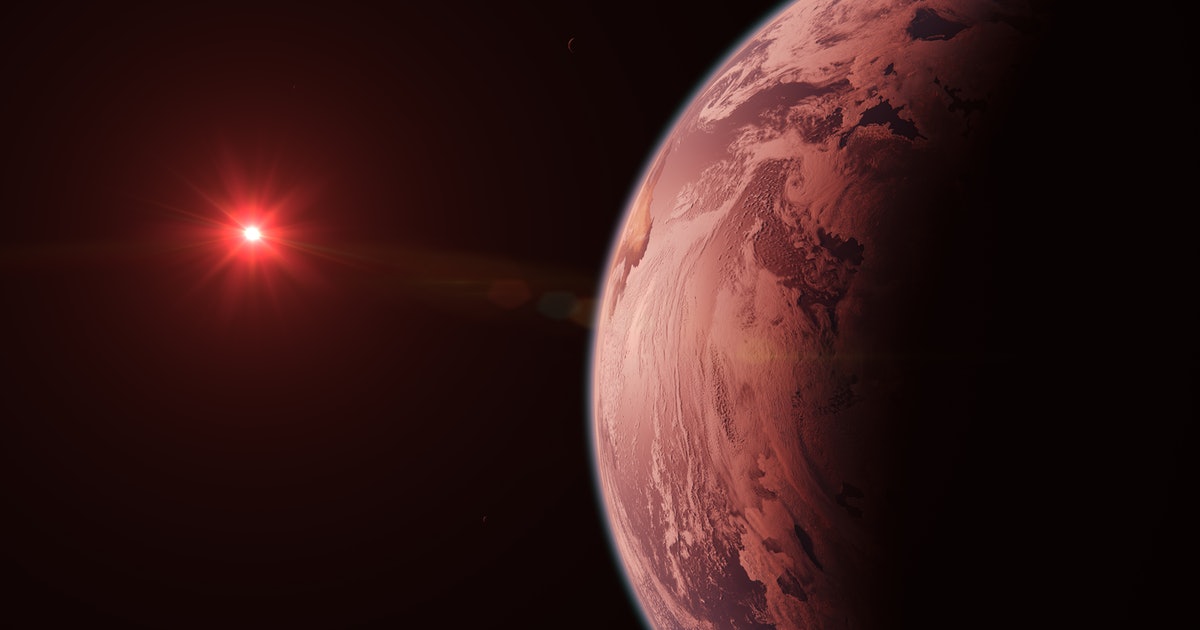
This nearby Earth-like exoplanet may be habitable, but only sometimes
When astronomers look to planets outside Earth for the promise of life as we know it, they look to the habitable zone — a region neither too hot nor too cold for liquid water on the surface. Since there is life virtually wherever there is water on Earth, scientists have primarily focused their searches for extraterrestrial life on habitable planets.
However, a planet’s orbit around a star is rarely a perfect circle, but typically a slightly elongated ellipse. The greater this elongation, or eccentricity, the more a planet may move in and out of its star’s habitable zone.
Now, in a new study accepted in Astronomy & Astrophysics, scientists may have discovered an eccentric planet that regularly veers in and out of its star’s habitable zone, posing a challenge to planetary scientists as to what we can and can’t consider habitable.
WHAT DID THE SCIENTISTS DO? — Astronomers investigated the nearby red dwarf star Gliese 514, located roughly 25 light-years from Earth. They analyzed data from the Keck Observatory in Hawaii, the La Silla Observatory in Chile, the Calar Alto Observatory in Spain, and the Hipparcos, Gaia, and TESS satellites, focusing on any tiny wobbles of the star’s position seen over nearly 25 years that might have resulted from gravitational tugs from orbiting planets.
The researchers discovered strong evidence Gliese 514 hosts a “super-Earth,” a rocky planet at least five times Earth’s mass. They suggest this world, dubbed Gliese 514 b, likely possesses an eccentric path that takes it out of its star’s habitable zone for two-thirds of its 140-day-long orbit.
A planet often enters into an eccentric orbit due to the gravitational influence of other worlds. Curiously, “we did not find evidence for other planets in the system, especially massive ones that could be the trigger for the orbit’s eccentricity,” study lead author Mario Damasso, an astrophysicist at the Observatory of Turin in Italy, tells Inverse. The origin of Gliese 514 b’s eccentric orbit remains unknown.
WHAT MIGHT LIFE BE LIKE ON THIS WORLD? — This poses an interesting astrobiological quandary: Would life have arisen? There’s no way to know for sure without finding biosignatures in the system, which could be difficult. But if life did arise there, it would be quite unusual.
“I’d guess most action in terms of biomass growth would happen in the ‘summer,’ and it would have to happen fast, like Arctic summers on steroids,” Caleb Scharf, director of astrobiology at Columbia University in New York, who did not take part in this research, tells Inverse.
However, “given how life finds niches, I could imagine other organisms that exploit the reduction in competition during the ‘winter,'” Scharf says. One might even imagine “hot” and “cold” ecosystems, each exploiting the other and each perhaps entering quiescence during “winter” and “summer,” respectively, he adds.
In addition, such a planet “could be an environment that encourages burrowing life, or life that can insulate when it needs to, but shed that when it’s ‘summer,'” Scharf says. Moreover, one might imagine a wide range of photosynthetic life attuned to different light and temperature levels, he notes.
WHAT’S NEXT? — “Gliese 514 is a close star to us, and it could be studied in greater detail in the future,” Damasso says. “A followup of the system could bring more precise planet parameters and likely detect additional lower-mass planets.”
Astrophysicist Sean Raymond at the Observatory of Bordeaux in France, who did not participate in this study, notes that if there are other planets around this star, they can interact on long time scales, such that their eccentricities and tilts can vary over time.
“The extreme case is a planet whose orbit oscillates between being on a circular orbit within the habitable zone and a very eccentric one that crosses the habitable zone but spends most of its time farther out,” Raymond tells Inverse. “I can imagine that the kinds of life that would thrive in each of these settings could be quite different, which would lead to evolutionary pressure favoring adaptability and maybe long-term hibernation. Lots of sci-fi stories to be imagined.”
When astronomers look to planets outside Earth for the promise of life as we know it, they look to the habitable zone — a region neither too hot nor too cold for liquid water on the surface. Since there is life virtually wherever there is water on Earth, scientists have primarily focused their searches for…
When astronomers look to planets outside Earth for the promise of life as we know it, they look to the habitable zone — a region neither too hot nor too cold for liquid water on the surface. Since there is life virtually wherever there is water on Earth, scientists have primarily focused their searches for…